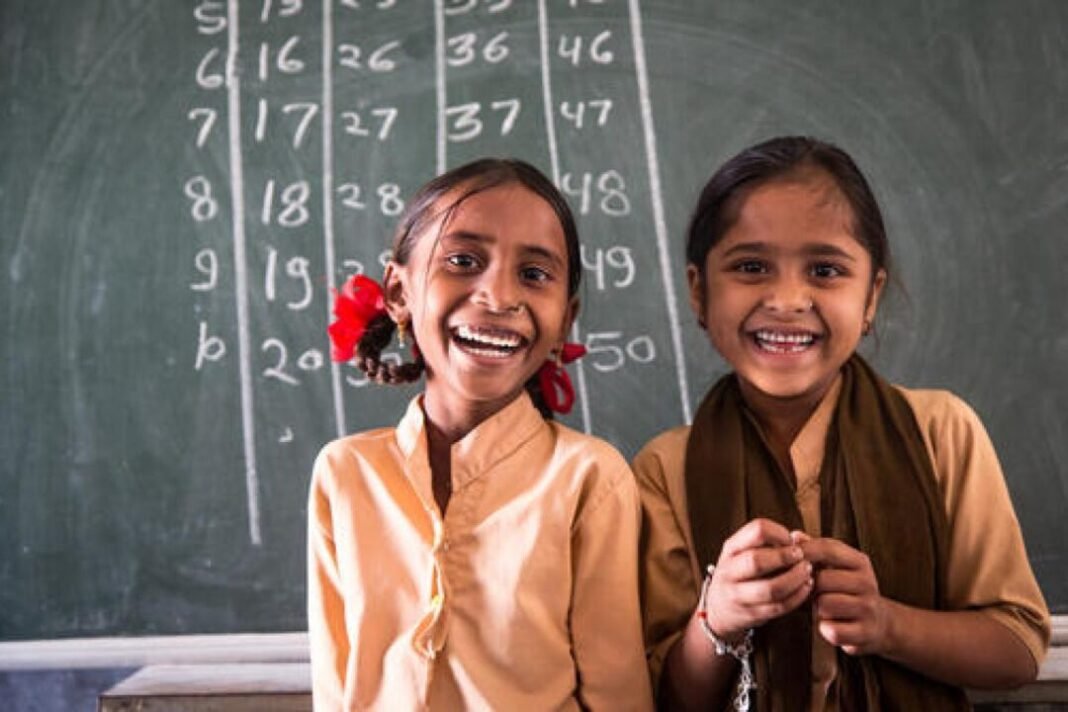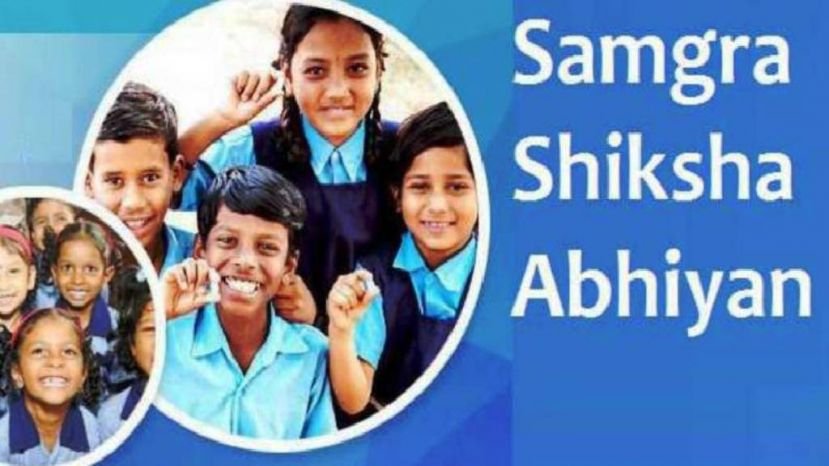By: Er. Prabhat Kishore
Education plays a vital role in the development of a country. It is used to mitigate most of the challenges faced in life. The knowledge that is attained through education helps open doors to a lot of opportunities for better prospects in career growth. Elementary education is the foundation of advanced learning. Keeping this in view, during the decade 1991-2000 centrally sponsored District Primary Education Programme (DPEP) was launched for Universalisation of Primary Education (UPE), whereas during 2001-2010 Sarva Shiksha Abhiyan (SSA) was launched for Universalisation of Elementary Education (UEE). It was given legal status on 1st April 2010 when the Right of children to free & compulsory education Act 2009 was implemented throughout the country. In 2018-19, Samagra Shiksha has been launched to cover the children from Pre-Nursery to Class-XII for Universalisation of Education up to Secondary level. National Education Policy 2020 outlines the vision of India’s new education system.
With the improved coverage, the number of schools imparting elementary education increased many-fold. From 853601 schools in 2002-03, their number has increased to 1449078 in 2015-16. Of the total 85.38 percent of schools are located in rural areas. During the same period, the number of primary schools increased from 601866 to 840546. On average, the number of primary schools per thousand child population (6 to 11 years) is 9, whereas the number of upper primary schools per thousand child population (11 to 14 years) is 8. The density of Primary schools per 10 sq. KM is 3.69, whereas in the case of upper primary school it is 1.85. Under Sarva Shiksha Abhiyan, a large number of schools have been opened and upgraded. The ratio for the year 2015-16 is one upper primary school for every set of 1.99 primary schools. It is noticed that in about 17 states the ratio of primary to upper primary school is better than the national average. Despite significant improvement in the ratio, there are a few states, such as Arunachal Pradesh, Andhra Pradesh, Jharkhand, Meghalaya, Goa, Assam, Manipur, and West Bengal, where the ratio still needs to be improved significantly.
Nearly 4.59% schools of the country are private aided whereas 18.50% are private unaided. The percentage of government and government-aided schools is as high as 74.32, which shows that eight out of every ten schools imparting elementary education in the country are funded by the government. As many as 162237 new primary and 78903 new upper primary schools have been opened since 2002-03, the majority of which are located in rural areas and 99% of these have been provided a school building. Schools imparting elementary education across 680 districts had an average of 5.1 classrooms. However, a significant difference is noticed in the average number in government (4.2 classrooms) and privately managed (7.8 classrooms) schools. About 82% of classrooms in primary schools are in good condition and the remaining 18% need either minor or major repairs.
In 125 districts of the country, the student-classroom ratio is above 30. On average about 27 students are sitting in one classroom in elementary schools, but there is an alarming situation in Bihar where SCR is 51. In the country, the percentage of primary schools with SCR greater than 30 was 25.74 whereas upper primary school with SCR greater than 35 is 28.01.
Availability of basic facilities in schools may not only attract more children but also help in improving retention rate. Of the total schools about 96.76% have drinking water facilities, 97.07 percent have boy’s toilets, 97.58 percent have separate toilets for girls and nearly 64.89 percent of schools have boundary walls. Computer education facility is available in 25.97 percent of schools in the country. Ramps have been provided in 61.83 percent of schools to attract physically challenged children. Providing nutritious food to all children under the mid-day meal schemes is one of the ambitious programs of the government. For this purpose, kitchen sheds have been constructed in nearly 80.02 percent of schools. The percentage of primary schools having an attached pre-primary section is only 10.72%. But most such schools are in urban areas. Nearly 61.67 percent of the schools have been electrified, but Bihar has an alarming situation in this sector where just 36.74 percent have an electric facility.
The commencement of various educational schemes by central as well as state governments has improved the scenario to a great extent. The enrolment in primary schools increased from 101.16 million in 2002-03 to 129.122784 million in 2015-16, whereas in upper primary school, the enrolment increased up to 67.593727 million. There has been consistent improvement both in Gender Parity Index (Percentage of enrolled girls compared to enrolled boys) and girls’ enrolment. The average of 680 districts indicates a GPI of 0.93 in primary classes and 0.95 in upper primary classes. In the years 2015-16, the shares of girls’ enrolment in primary and upper primary classes were 48.21% & 48.63% respectively. The percentage of girls’ enrolment in government managed schools was found to be higher than in private managed schools.
The share of SC & ST enrolment with respect to total enrolment works out to be 19.94 & 10.64 percent at primary level and 19.49 & 9.81 % at upper primary level. At all levels, government schools are the main providers of educational needs of both SC & ST children. The share of OBC enrolment in the primary and upper primary classes was 45.05 and 45.15 percent respectively. The percentage of Muslim enrolment at primary & upper primary levels is reported to be 14.43 and 12.60 percent with which girls’ share is 49.05 and 51.35 percent respectively. The enrolment of Muslim children (13.80 percent) is satisfactory in respect of their population (14.20 percent).
A lot of emphasis is given to including and integrating children with special needs (CWSN) into the education system. The percentage enrolment of such children is 1.18 and 1.13 percent at the primary and upper primary levels. One of the essential requirements to achieve UEE is to retain students in the education system. This is also reflected in the retention rate at the primary level which is estimated to be 84.21 percent and the drop-out rate has come to just 4.13 percent. The transition from primary to upper primary level has improved significantly to 90.14 percent.
The availability of teachers in schools is an important variable for quality education. In the country, 8076756 teachers are engaged in schools imparting elementary education, out of which 4674275 are posted in government schools. 8.48 percent of teachers are engaged in aided schools whereas 30.79 percent are in unaided schools. The All India average reveals that on average 5.6 teachers in a school imparts elementary education compared to an average of 3.1 teachers per primary school. About 47.99 percent of the total teachers are female, which shows a somewhat satisfactory gender share. Urban areas have higher percentage of female teachers compared to rural areas. Still there are 9.67% single teacher schools in the country. There has been consistent improvement in the pupil-teacher ratio (PTR). The PTR is 23:1 and 17:1 at primary and upper primary level as against national norms of 30:1 and 35:1. In 137 districts of the country, PTR is above 30. The concentration is mostly in Bihar, Jharkhand, and Uttar Pradesh. In only 2 states namely Bihar (36) and Uttar Pradesh PTR at primary level is above 30. At the primary level percentage of schools having PTR above is 25.93, whereas at the upper primary level percentage of schools having PTR above 35 is 13.46. There is an alarming situation in 4 states namely Bihar (65.92), Delhi (42.92), Jharkhand (41.23), and Uttar Pradesh (57.70), where the percentage of schools having PTR is above 35. In Bihar not only is the pupil-teacher ratio (36) high but also the student-classroom ratio (51). The number of teachers is better in private schools compared to government schools. Of the total teachers, 13.18 percent are contractual teachers. About 82.41% of the regular teachers are professionally trained, whereas only 67.02% of the contract teachers are professionally trained. The percentage of teachers aged above 55 years is just 6.16% in all types of schools. The majority of the teachers in the SC & ST community are in government schools. In elementary schools, there are 999335 teachers from the SC community and 683268 teachers from the ST community, which constitutes about 12.37% and 8.46% of the total working teachers. About 2875608 (35.60%) teachers are from the OBC community.
After the implementation of RTE, changes in various norms of SSA have been done. Emphasis on the construction of school buildings and recruitment of qualified teachers has been given and more funds have been ensured for that. After attaining the goal of enrolment & retention set up under DPEP & SSA, now the prime focus is on quality education up to the secondary level under “Samagra Shiksha”. Based on NEP 2020 recommendations, modifications in programmatic and financial norms of Samagra Shiksha have been done. It is hoped that in coming years, significant improvement will be noticed in the field of elementary & secondary education in the country. (The author is a technocrat & educationist. He can be reached at prabhatkishore65@gmail.com)







